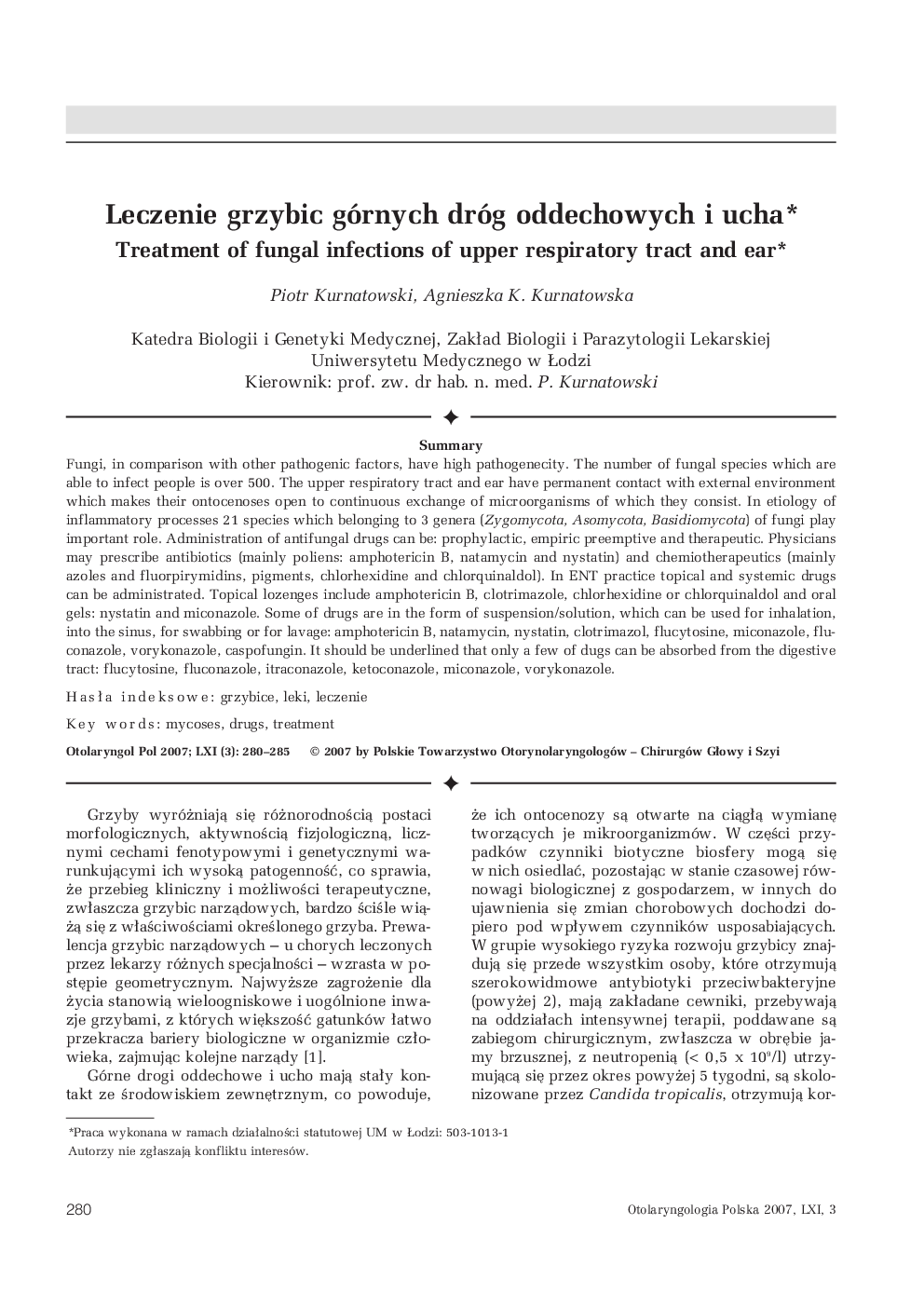| Article ID | Journal | Published Year | Pages | File Type |
|---|---|---|---|---|
| 3171356 | Otolaryngologia Polska | 2007 | 6 Pages |
Abstract
Fungi, in comparison with other pathogenic factors, have high pathogenecity. The number of fungal species which are able to infect people is over 500. The upper respiratory tract and ear have permanent contact with external environment which makes their ontocenoses open to continuous exchange of microorganisms of which they consist. In etiology of inflammatory processes 21 species which belong to 3 genera (Zygomycota, Asomycota, Basidiomycota) of fungi play important role. Administration of antifungal drugs can be: prophylactic, empiric preemptive and therapeutic. Physicians may prescribe antibiotics (mainly poliens: amphotericin B, natamycin and nystatin) and chemiotherapeutics (mainly azoles and fluorpirymidins, pigments, chlorhexidine and chlorquinaldol). In ENT practice topical and systemic drugs can be administrated. Topical lozenges include amphotericin B, clotrimazole, chlorhexidine or chlorquinaldol and oral gels: nystatin and miconazole. Some of drugs are in the form of suspension/solution, which can be used for inhalation, into the sinus, for swabbing or for lavage: amphotericin B, natamycin, nystatin, clotrimazol, flucytosine, miconazole, fluconazole, vorykonazole, caspofungin. It should be underlined that only a few of drugs can be absorbed from the digestive tract: flucytosine, fluconazole, itraconazole, ketoconazole, miconazole, vorykonazole.
Related Topics
Health Sciences
Medicine and Dentistry
Dentistry, Oral Surgery and Medicine
Authors
Piotr Kurnatowski, Agnieszka K. Kurnatowska,
